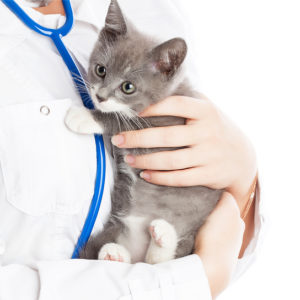Editor’s Note: For an alternative viewpoint, please see Point: Why the Recent Cat Fight Over the USDA’s Feline Research Should Worry All of Us
It’s a simple story: Some people found out that the Department of Agriculture was conducting experiments in which cats were fed to other cats and they blew the whistle. Now experimenters can’t keep killing a bunch of cats.
But this upsets pro-animal experimentation group Americans for Medical Progress (AMP) because they hate it when anyone questions what happens to animals in laboratories — no matter how pointless or painful it is.
How could anyone be outraged by the end of an experiment in which the bodies of hundreds of dogs and cats from Colombia, Brazil, Vietnam, Ethiopia and China were fed to cats in a parasite experiment that even the USDA now says isn’t necessary?
But AMP and other cruelty apologists are stomping up and down, berating animal rights activists and journalists alike for not understanding that science needs to kill animals. A lot.
Here are some facts we all need to pay attention to:
—The National Institutes of Health acknowledges that 95 percent of all new drugs that test safe and effective in animal tests fail or cause harm in human clinical trials.
—NIH also acknowledges that 90 percent of basic research, most of which involves animals, fails to lead to any human therapies.
In other words, animal experimentation is a colossal failure. Any attempt to shine a light on the ridiculous, fiscally wasteful and cruel experimentation that goes on in laboratories throughout the world should be applauded. Likewise, anyone who defends it ought to be questioned vigorously.
The USDA reports that 19,000 cats are used each year in experimentation — in addition to the tens of thousands who are killed and sold to schools for crude classroom dissections. Often, these cats endure the most heinous procedures imaginable.
Experimenters at the University of Wisconsin-Madison tormented cats in “sound-localization” experiments. Experimenters cut into their skulls, injected a toxic chemical to deafen them, and cut off their ears. They were deprived of food for several days in order to keep them hungry so they would cooperate in exchange for a dab of something to eat. One cat, named Double Trouble, even became conscious while experimenters cut into her head. NIH spent more than $3 million for these experiments until a PETA campaign shut it down.
In a continuing project, experimenters at the University of California-Irvine are intentionally deafening cats by either injecting a toxic substance directly into their ears or removing the small bones found in the inner ear. They then open the cats’ skulls and insert an electrode into their heads, which pierce their auditory nerves. The cats used in this experiment are then killed.
In another experiment at the University of South Florida, seven cats were used in a crude experiment in which they were subjected to a procedure known as “suction decerebration,” in which portions of their brain were intentionally destroyed. The cats then had a tube inserted into their mouths that forced water through their airway to induce a swallowing reaction.
The USDA cat experiments, and many others, were rightfully outed and shut down as cruel and useless wastes of taxpayer money. But there’s so much more pain and suffering taking place every day in laboratories the world over.
All animal experimentation needs to end and the gravy train of federal grant money needs to be derailed. Using funds for superior non-animal research will make us healthier — and a little richer, fiscally and ethically.

